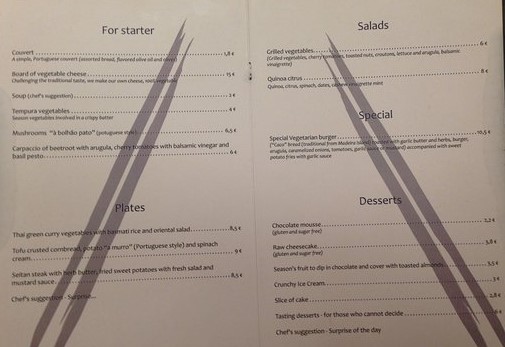Restaurants are replacing paper menus with QR Codes and it has to stop!
QR Codes Origin Story
The QR (Quick Response) Code was invented in 1994 by Japanese engineer Masahiro Hara while he was employed by the automotive parts company Denso Wave. Its initial use was to track parts during the manufacturing process.
Later, QR Codes were used for inventory management as well as industrial ticketing and labeling.
In the 21st century, QR Codes became widely used in marketing campaigns as consumers used their smartphones to scan QR Codes and directly connect with companies websites.
QR Codes and Restaurants

Remember when Covid-19 first hit? Scientists didn’t fully understand how the virus was spread. One theory was that an infected person could cough on or touch a surface, like a tabletop, and leave behind a live virus. Then, an uninfected person could touch that surface, touch their face, and become infected with Covid-19.
Remember that?
I was one of those people who wiped down their groceries with disinfectant wipes after a trip to the store. I even wiped the soles of my shoes after going outside.
Because of this idea that the virus could be spread by touching surfaces that were in contact with an infected person, restaurants were quick to react. When they began opening back up in 2020, they didn’t want their customers to touching physical menus and potentially passing the virus to new hosts.
Enter the QR Code.
Restaurants could create a QR Code, plaster it on the table, napkin dispensers, the bar, and on the wall. Customers would use their smart phones, scan the QR Code, and immediately see the establishment’s menu.
Viola, no more sharing potentially disease ridden virus vectors known as paper menus.
Why restaurants like QR Codes
QR Codes make it easy for restaurant managers to update menus. Run out of the pasta primavera? No problem, just update the menu online. Got a new special? In a few keystrokes it’s added to menu. Order too much eggplant? Put the Eggplant Parm on special in a minute or two.
No more updating and printing out new menus every time there’s a change. Or worse, crossing it off the menu or having your servers explain the situation.
And, if you want, you can even adjust prices. Some restaurants change prices depending on the time of day. If it’s especially busy and there’s a lot of demand, prices go up. If Tuesdays, for example, are slow, prices may go down.
Other restaurant managers have said they save a lot of money on printing costs by using QR Codes, though this is debatable because studies have shown that customers spend up to 20% more when ordering from a physical menu instead of QR Code.
QR Codes suck
So, why do I dislike QR Codes so much?
It’s not the QR Codes themselves. I understand that they serve a purpose and for certain industrial uses, like inventory tracking, they can be quite useful. Even for some marketing campaigns, QR Codes might be a good idea, although that does seem rather 2009.
But, when taking the place of a menu, QR Codes are a terrible idea.
First and foremost, they often don’t work. I’ve been in restaurants with poor Wi-Fi, making it difficult to get the QR Code to connect to my phone. Another times, the QR Code simply haven’t worked at all.
Second, they’re clunky and inconvenient to use. If a restaurant has an extensive menu or a large wine list, it’s a pain to scroll through endless options. Or, if there are several options under each heading (Main Courses, Fish, Meat, Vegan, etc.) it can be difficult to find what you want. This is endlessly frustrating if you have to go back to a home page to get to each category. Ugh!
Third, not everyone is tech savvy. Do you really expect grandma to navigate the QR Code and online menu on her phone? And, if she can’t, does someone end up reading the entire menu out loud to her? And what about folks without a smartphone?
It’s not just technology Luddites who are left out of this QR Code revolution. Lots of people can’t afford smart phones or just choose to have an old-timey flip phone. Are they not welcome at the many QR Code-centric dining establishments?
A Better Dining Experience in a QR World

OK, I’ll admit it. I sound a little like an old man screaming for kids to get off my lawn.
I understand that QR Codes are probably here to stay and I’m probably tilting against windmills in calling for their abolition in restaurants.
However, I would like to propose a solution.
Keep your QR Codes. If they’re working and people like them, fine.
But, also have paper menus as a backup. You can point people to the QR Code, but if they bristle, or your Wi-Fi is down, or grandma doesn’t have a smart phone, you can offer a physical menu.
That shouldn’t be too difficult and then everyone can partake and enjoy the experience at your establishment.
About the Author

Brent Petersen is the Editor-in-Chief of Destination Eat Drink. He currently resides in Setubal, Portugal. Brent has written the novel “Truffle Hunt” (Eckhartz Press) and the short story collection “That Bird.” He’s also written dozens of foodie travel guides to cities around the world on Destination Eat Drink, including in-depth eating and drinking guides to Lisbon, Porto, Sintra, Monsaraz, and Evora in Portugal. Brent’s podcast, also called Destination Eat Drink, is available on all major podcasting platforms and is distributed by the Radio Misfits Podcast Network.
